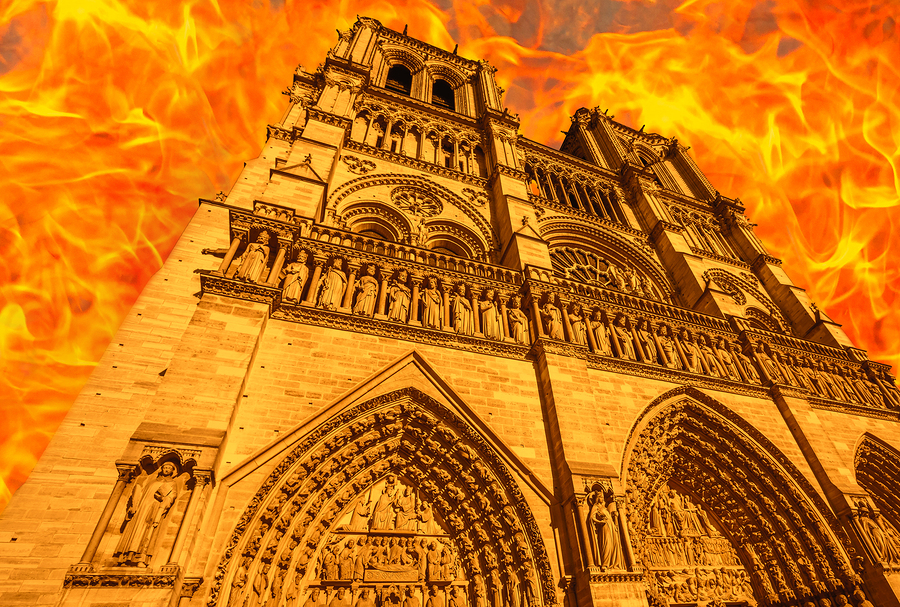The emotion and stupor in the first hours following the fire of the Notre-Dame Cathedral in Paris on April 16, 2019, quickly gave way to the time for reconstruction. Experts, architects, engineers… everyone descended on the media to give their opinion on the matter, to say nothing of the French president, Emmanuel Macron, who called for his ambition of having the work completed within five years. In this context, it goes without saying that technology will play an essential role in this colossal project.
Digitized archives
The various stakeholders of the reconstruction will be able to draw on countless digitized documents of the cathedral, which happens to be one of the most documented buildings in the world: plans, sections, inventories and elevations recently developed on the main parts of the cathedral: 3D laser modelling and surveys done on the famous structure – called the forest – which contains 150 scans with millimetre accuracy (close to five billion points). All these documents provide essential insight into how the various parts are made and also on their location. Thus, these scanning technologies not only serve to preserve the memory, but they are also indispensable in cases of reconstruction or restoration.
Technology used for diagnosis
Diagnosing the situation has to go well beyond a simple visual analysis. First of all, the impacts and the building’s fragile areas must be identified. With a Gothic style, Notre-Dame’s equilibrium is provided by lateral thrust absorbed by flying buttresses and counter-supports. By developing a new 3D survey (with 30 to 40 billion points) and comparing it with the previous ones, it will be possible to identify the deformations that continue to develop and determine the consolidation measures to be carried out as a priority. Then a considerable effort will be made on analyzing the fire and water damage to the property. Experts will be at work to examine the potential for mould attacking ancient objects which are very sensitive to moisture, to prevent any risk of mildew and rotting. Similarly, specialized biologists will be involved to treat for bacteria, like a doctor, by issuing a diagnosis, finding treatment solutions (with antibiotics) and thereby preventing them from spreading.
Ancestral skills backed by technology
The big question that quickly appeared after the fire concerns the type of reconstruction for the Notre-Dame Cathedral: identical or with a touch of modernity? This debate may be decided by Building Information Modelling. After entering a multitude of technical data (fragility, thrust, strength of materials, etc.) in the software, engineers and art historians as well as the architects will not only be able to study each restoration proposal but also visualize a simulation of the ageing of the reconstructed cathedral and to observe any risks to be avoided. In addition, the severity of technical standards will require high quality materials incorporating technological innovations to offer better watertightness or fireproofing of delicate materials. Finally, artisans and Compagnons du Devoir, a skilled workers guild, although the work in secular processes, will have to incorporate new technologies to deliver ever more accurate and faster work (3D representation, 3D printing, etc.).
There are many unknowns surrounding this reconstruction project, but one thing is certain. Thanks to technology and the ambition displayed by the French president, we will be able to see the Cathedral reconstructed in our lifetimes.
